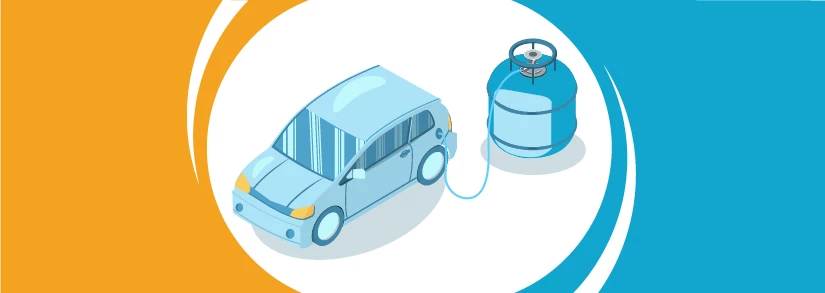Autogas Ireland: Why and how to switch your car

Autogas is not as well known in Ireland as its more popular counterparts, petrol and diesel, although extensively available at over 1400 refuelling sites on the island. We examine what is autogas and its relationship with LPG, the advantages and disadvantages of using it in your car, and how to go about getting it.
What is autogas?
Autogas is the name given to LPG when it is used to fuel vehicles. Sometimes LPG used for generators is also called autogas. Ironically, although its current uptake in the Irish market does not account for a large percentage, it is the third most popular automotive fuel worldwide, fuelling in excess of 20 million vehicles.
Some confusion can arise from the tendency to use gas as an abbreviation of gasoline, so it is also known as propane gas, LPG or auto LPG when used in a motoring context.
What is LPG? LPG can be propane or butane. At normal temperatures, propane and butane are both gases but subjecting them to cooling or pressurising converts them to a liquid form which can then be more easily transported and stored. LPG in Ireland is normally transported by tankers to depots in order to refuel gas bottles, or directly used to top up residential LPG tanks.
Is autogas better than petrol and diesel?
As the third most popular vehicular fuel after petrol and diesel, what exactly are the pros and cons of using autogas in cars?
Advantages of autogas
The advantages of autogas are numerous and definitely outweigh the disadvantages.
- Cheap: Autogas is much cheaper than petrol and gas, up to 50%, and tends to less sensitive to market fluctuations. This means you won’t have to deal with a sudden steep increase in price. The main reason for the large price difference is that due to lower emissions, LPG autogas is usually subjected to less taxation than other fossil fuels.
- Cleaner: Autogas produces 33% fewer carbon emissions than petrol and a massive 45% less than diesel. Soot particle emissions are also much lower, and nitrogen oxide emissions are from 82% to 99% less than traditional vehicle fuels. Nitrogen oxide combines with oxygen to create nitrogen dioxide (NO2) and is the main perpetrator behind acid rain and smog.
- Safe: A common worry of fitting an autogas tank in your car is that in an accident it December combust. However, autogas tanks are 20 times more puncture resistant than traditional fuel tanks and propane autogas has the lowest flammability level of any motor fuel.
Disadvantages of autogas
- Availability: Although the availability of autogas is fairly widespread, depending on the location of consumers they December need to plan ahead in order to refuel. Petrol and diesel do tend to more readily available in Ireland.
- Autogas has a lower calorific value (around 10% less) than petrol and diesel. This means that you need more of it to go the same distance.
- Unless you buy an LPG car straight off the bat, you’ll need to pay around €1000, depending on your vehicle, to convert it to autogas.
What’s the difference between LPG and autogas?

Basically, very little. Autogas is usually propane with some butane mixed in, while propane LPG and butane LPG tend to be sold without mixing for home heating and cooking purposes.
So technically, propane gas is LPG, but not all LPG is propane (as it can be butane or a mix). Therefore Autogas is LPG but not the LPG you would normally fill your home tank or LPG cylinders with.
Autogas cars are not refilled with regular gas cylinders, but rather at petrol stations. A special Autogas pump is available. The pump is inserted into the car's external LPG port and locked in place via a lever before transferring the LPG mix.
Can I buy an LPG car?
Although there are some second-hand LPG car dealerships in Ireland, and secondhand LPG cars can also be bought online, there are no new cars coming off the production line in Ireland that are already fitted with LPG tanks. However, new LPG cars (that are exclusively LPG and not dual fuel) can be bought in other countries.
So your choices are either:
- Buy a car which has already been converted.
- Buy a secondhand car and convert it.
- Buy a new car and convert it.
- Import a new LPG car.
How do I switch my car to LPG?

To convert your car to Autogas/energy/lpg/, there is no need for anything to be taken out. A secondary fuel system will simply be installed in your car by a professional installer. The autogas fuel system consists of:
- A separate fuel tank (usually placed in the wheel well)
- Fuel injectors to feed the LPG to the engine
- A small unit placed on the dashboard in order to see the LPG fuel status
- A new fueling point added to the outside of the car
The cost of conversion will depend on the type of car to be converted and can run between €800-€1400. Note that if converting your vehicle to LPG, you can choose to either convert it to run off LPG exclusively, or to run on dual fuels (enabling it to switch between autogas and petrol or diesel).
The majority of customers choose the dual fuel option, as the necessary components are already installed for diesel or petrol combustion, and they then have a backup option should they run out of autogas. Dual-fuel cars usually require some petrol to start the car, and then switch to LPG. Autogas cars will also switch back to petrol automatically if LPG runs out.
The installation process usually takes no more than 3 working days, and some LPG stallers provide a complimentary loan car in the meantime. After conversion, you can then top up your new autogas LPG car at any of the 100 filling stations available around Ireland.